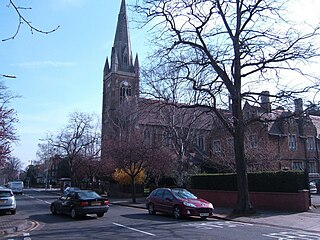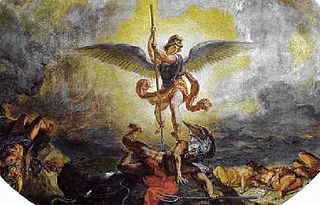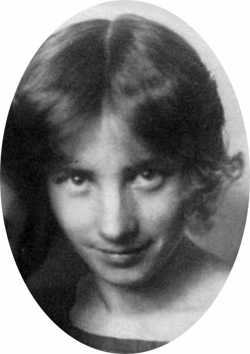Notes
- ↑ Matthews, p. 34
- 1 2 3 4 5 6 7 Moore, Lloyd. Liner notes to Naxos CD 8.557206, 2004.
- ↑ Britten (1991). Diary, 25 September 1936: p. 443
- ↑ Britten, Beth (2013). My Brother Benjamin. London: Faber & Faber. ISBN 9780571299959.
- ↑ Britten (1991), pp. 443–444
- 1 2 Britten (1991). Diary, 25 September 1936: p. 446
- ↑ Matthews, p. 37
- ↑ Britten (1991). Diary, 26 September 1936: p. 447
- ↑ The Daily Telegraph , 26 September 1936: quoted in Britten (1991), p. 448
- ↑ "The Norwich Festival", The Observer , 27 September 1936, p. 19
- ↑ "Norwich Musical Festival", The Times , 26 September 1936, p. 10
- ↑ Matthews, pp. 37–38
- ↑ "Broadcasting", The Times , 30 April 1937, p. 9
Related Research Articles

Edward Benjamin Britten, Baron Britten was an English composer, conductor, and pianist. He was a central figure of 20th-century British music, with a range of works including opera, other vocal music, orchestral and chamber pieces. His best-known works include the opera Peter Grimes (1945), the War Requiem (1962) and the orchestral showpiece The Young Person's Guide to the Orchestra (1945).

Stuart Oliver Knussen was a British composer of contemporary classical music and conductor. Among the most influential British composers of his generation, his relatively few compositions are "rooted in 20th-century modernism, [but] beholden to no school but his own"

Dame Elizabeth Violet Maconchy LeFanu was an Irish-English composer. She is considered to be one of the finest composers Great Britain and Ireland have produced.

Grace Mary Williams was a Welsh composer, generally regarded as Wales's most notable female composer, and the first British woman to score a feature film.
Colin Matthews, OBE is an English composer of contemporary classical music. Noted for his large-scale orchestral compositions, Matthews is also a prolific arranger of other composer's music, including works by Berlioz, Britten, Dowland, Mahler, Purcell and Schubert. Other arrangements include orchestrations of all Debussy's 24 Préludes, both books of Debussy's Images, and two movements—Oiseaux tristes and La vallée des cloches—from Ravel's Miroirs. Having received a doctorate from University of Sussex on the works of Mahler, from 1964–1975 Matthews worked with his brother David Matthews and musicologist Deryck Cooke on completing a performance version of Mahler's Tenth Symphony.

David Matthews is an English composer of mainly orchestral, chamber, vocal and piano works.

Spring Symphony is a choral symphony by Benjamin Britten, his Opus 44. The work is scored for soprano, alto and tenor soloists, mixed choir, boys' choir and orchestra. Britten used texts of several poems related to spring, mostly from the 16th and 17th centuries and also one by W. H. Auden. Britten dedicated the work to Serge Koussevitzky and the Boston Symphony Orchestra. The work received its premiere in the Concertgebouw, Amsterdam on 14 July 1949 as part of the Holland Festival
Sinfonia da Requiem, Op. 20, for orchestra is a sinfonia written by Benjamin Britten in 1940 at the age of 26. It was one of several works commissioned from different composers by the Japanese government to mark Emperor Jimmu's 2600th anniversary of the founding of the Japanese Empire. The Japanese government rejected the Sinfonia for its use of Latin titles from the Catholic Requiem for its three movements and for its somber overall character, but it was received positively at its world premiere in New York on 29 March 1941 under John Barbirolli. A performance in Boston under Serge Koussevitzky led to the commission of the opera Peter Grimes from the Koussevitzky Music Foundations.

Hymn to St Cecilia, Op. 27 is a choral piece by Benjamin Britten (1913–1976), a setting of a poem by W. H. Auden written between 1940 and 1942. Auden's original title was "Three Songs for St. Cecilia's Day", and he later published the poem as "Anthem for St. Cecilia’s Day ".

Rejoice in the Lamb is a cantata for four soloists, SATB choir and organ composed by Benjamin Britten in 1943 and uses text from the poem Jubilate Agno by Christopher Smart (1722–1771). The poem, written while Smart was in an asylum, depicts idiosyncratic praise and worship of God by different things including animals, letters of the alphabet and musical instruments. Britten was introduced to the poem by W. H. Auden whilst visiting the United States, selecting 48 lines of the poem to set to music with the assistance of Edward Sackville-West. The cantata was commissioned by the Reverend Walter Hussey for the celebration of the 50th anniversary of the consecration of St Matthew's Church, Northampton. Critics praised the work for its uniqueness and creative handling of the text. Rejoice in the Lamb has been arranged for chorus, solos and orchestral accompaniment, and for SSAA choir and organ.
Nocturne, Op. 60, is a song cycle by Benjamin Britten, written for tenor, seven obbligato instruments and strings. The seven instruments are flute, cor anglais, clarinet, bassoon, harp, French horn and timpani.
Herbert Henry John Murrill was an English musician, composer, and organist.
Les Illuminations, Op. 18, is a song cycle by Benjamin Britten, first performed in 1940. It is composed for soprano or tenor soloist and string orchestra, and sets verse and prose poems written in 1872–1873 by Arthur Rimbaud, part of his collection Les Illuminations.

The Company of Heaven is a composition for soloists, speakers, choir, timpani, organ, and string orchestra by Benjamin Britten. The title refers to angels, the topic of the work, reflected in texts from the Bible and by poets. The music serves as incidental music for a mostly spoken radio feature which was first heard as a broadcast of the BBC in 1937.
Mont Juic, suite of Catalan dances for orchestra, was written jointly by Lennox Berkeley and Benjamin Britten in 1937. Named for Montjuïc, it was published as Berkeley's Op. 9 and Britten's Op. 12.

Sophie Adele Wyss was a Swiss soprano who made her career as a concert singer and broadcaster in the UK. She was noted for her performances of French works, many of them new to Britain, for giving the world premieres of Benjamin Britten's orchestral song cycles Our Hunting Fathers (1936) and Les Illuminations (1940), and for encouraging other composers to set English and French texts. Among those who wrote for her were Lennox Berkeley, Arnold Cooke, Roberto Gerhard, Elizabeth Maconchy, Peter Racine Fricker, Alan Rawsthorne and Mátyás Seiber.
This is a summary of 1936 in music in the United Kingdom.
Benjamin Britten's Sinfonietta was composed in 1932, at the age of 18, while he was a student at the Royal College of Music. It was first performed in 1933 at The Ballet Club, London conducted by Iris Lemare. It was published as his Op. 1 and dedicated to his teacher Frank Bridge.
Joseph Phibbs is an English composer of orchestral, choral and chamber music. He has also composed for theatre, both in the UK and Japan. Since 1998 he has written regularly to commissions for Festivals, for private sponsors, and for the BBC, which has broadcast premieres of his orchestral and chamber works from the Proms and elsewhere. His works have been given premieres in Europe, the United States and the Far East, and he has received prestigious awards, including most recently a British Composer Award, and a Library of Congress Serge Koussevitzky Music Foundation Award. Many of his works have been premiered by leading international musicians, including Dame Evelyn Glennie, Esa-Pekka Salonen, Leonard Slatkin, Sakari Oramo, Vasily Petrenko, Gianandrea Noseda, and the Belcea Quartet.
References
- Britten, Benjamin (1991). Donald Mitchell (ed.). Letters from a Life: The Selected Letters of Benjamin Britten, Volume 1, 1923–39. London: Faber & Faber. ISBN 057115221X.
- Matthews, David (2013). Britten. London: Haus Publishing. ISBN 978-1908323385.